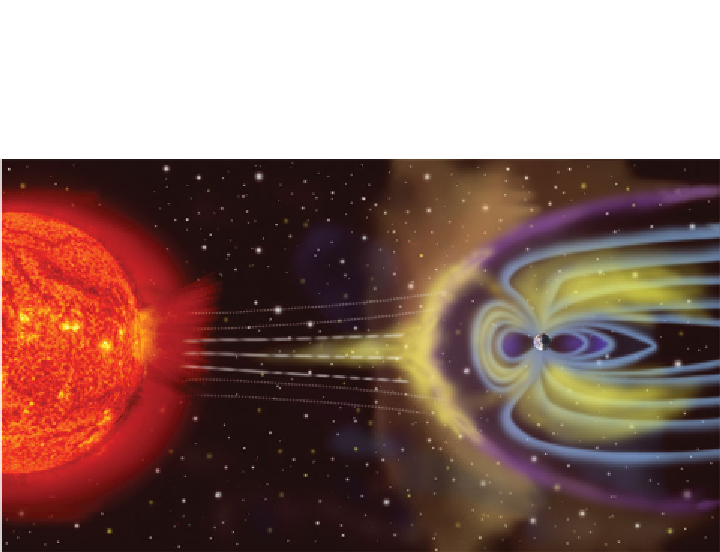Geoscience Reference
In-Depth Information
Figure 7.3
An artist's conception of the interaction between the solar wind and Earth's
magnetic
field. (Credit: NASA)
an invisible comet
with the tail of the comet
(the magnetotail) extending away from the Sun to distances perhaps as large as
1000 or more Earth radii. The front of the magnetosphere, facing the Sun, is de
-
now called the magnetosphere
-
ned
by a shock wave that is formed when the solar wind (an ionised gas that is
formed by the outward expansion of the Sun
'
s hot (million and more degree)
upper atmosphere, the corona, encounters the Earth
field. In physical terms,
the pressure in the solar wind balances the pressure exerted by the magnetic
'
s
field.
This front boundary is at a nominal distance of about 10 Earth radii, and can
move in and out under changing solar wind conditions driven by solar events.
Around the boundary and inside the magnetosphere is a complex environment
of ionised gases, largely hydrogen ions and electrons, and electromagnetic and
hydromagnetic waves of various types. The ionised gases are called
'
plasmas
'
.
There are also small amounts of ions of oxygen and nitrogen from Earth
s
atmosphere, as well as limited densities of ions from the Sun. The physical
processes that control and change these ions and their distributions in space
involve large-scale electric
'
fields,
and therefore the ionised particle populations, can be drastically altered when solar
storms occur and large amounts of the corona are expelled into the interplanetary
medium
fields and Earth
'
s bar magnet
field. These electric
and then encounter Earth. At such
times, and even under less severe solar disturbances, Earth
-
events called coronal mass ejections
-
'
s magnetic
field can be
disturbed, with the resulting
'
geomagnetic storms
'-
disturbances in the
'
weather
'
of space
-
causing auroral displays and changes in the ionised particle distributions.



Search WWH ::

Custom Search